Author of Designing for Behavior Change
Stephen Wendel

🕒 DURATION: 15 MIN
A Blueprint for Behavioral Design
Presented by


INTERACTIVE CASE STUDY #3
Part 2


Welcome to the second part of this Pro case study.





This one is packed with great insights. Over to Steve!



Hi again! I’m Steve Wendel, Author of Designing for Behavior Change and Head of Behavioral Science at Morningstar.




Welcome to our second part of a Blueprint for Behavioral Design. The goal here is to share some of the most useful insights from my book, Designing for Behavior Change.





Today we'll cover the following, including an additional couple of Behavioral Design Gems 💎




How to understand and diagnose micro-behaviors 🧐
5.
4.
1.
2.
3.
A framework for identifying obstacles and behavior change strategies 🚀
How we can cue the desired behavior and elicit the right emotional response 🤩
How we can support user in making the right evaluation and boost their ability 💪
Strategies for getting the timing right and ensuring a positive experience ⭐️
Case Study Overview

BEHAVIORAL DESIGN GEMS COLLECTED









DECIDE
A Blueprint for Applied Behavioral Science
Define the Problem
Craft the Intervention
Implement the Solution
Determine the Impact
Evaluate Next Steps
Explore the Context



In the previous case study, I introduced you to the DECIDE process, a framework for how we decide on the right behavior-changing interventions in our products.

BEHAVIORAL DESIGN GEMS COLLECTED









We have previously covered the first two steps of the process: Define the Problem and Explore the Context.

DECIDE
A Blueprint for Applied Behavioral Science



Define the Problem
Craft the Intervention
Implement the Solution
Determine the Impact
Evaluate Next Steps
Explore the Context
BEHAVIORAL DESIGN GEMS COLLECTED









Well, almost...

DECIDE
A Blueprint for Applied Behavioral Science



Define the Problem
Craft the Intervention
Implement the Solution
Determine the Impact
Evaluate Next Steps
Explore the Context
BEHAVIORAL DESIGN GEMS COLLECTED









Just a short recap... Last time, we were looking at developing an app to help people get off the couch and exercise.

BEHAVIORAL DESIGN GEMS COLLECTED









This is how we defined our behavioral problem 💡

By helping a middle-aged working parent to regularly go to the gym, that will help them achieve a positive health outcome.
"By helping [actor] [start / stop] doing [describe action], we will cause [outcome]."
Define Behavioral Problem
When doing Behavioral Design, you particularly need to identify the behavioral problem you want to solve, by encouraging or stopping a specific behavior. This can be framed as a below hypothesis.
LAST WEEK RECAP
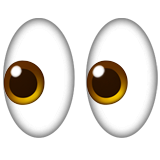


BEHAVIORAL DESIGN GEMS COLLECTED









We have also explored the context of our problem by coming up with a behavioral plan.




Micro-behaviors are the small steps between the starting point and the target action.
The Behavioral Plan
Tool for doing qualitative and quantitative research. You map out the status quo and the micro-behaviors from there to action.
Once you have your map you then see if you users can take action at each step.
LAST WEEK RECAP



BEHAVIORAL DESIGN GEMS COLLECTED









It looked something like this...

👀 Read the email about the app
🔽 Download the app
🔐 Sign up for it with email and password
🔊 Set reminders in the app to go on a specific day
🙈 Sees and opens those reminders when they appear
👕 Pick up gym clothes (if they are clean)
🏋️♀️ Go to the gym!
User steps from couch to gym
BEHAVIORAL DESIGN GEMS COLLECTED









Remember that our behavioral plan describes each small micro-behavior the user needs to take to move from inaction to action.

BEHAVIORAL DESIGN GEMS COLLECTED






👀 Read the email about the app
🔽 Download the app
🔐 Sign up for it with email and password
🔊 Set reminders in the app to go on a specific day
🙈 Sees and opens those reminders when they appear
👕 Pick up gym clothes (if they are clean)
🏋️♀️ Go to the gym!
User steps from couch to gym



However, for each micro-behavior, your users may falter....

BEHAVIORAL DESIGN GEMS COLLECTED






👀 Read the email about the app
🔽 Download the app
🔐 Sign up for it with email and password
🔊 Set reminders in the app to go on a specific day
🙈 Sees and opens those reminders when they appear
👕 Pick up gym clothes (if they are clean)
🏋️♀️ Go to the gym!
User steps from couch to gym



Therefore, our next step is to diagnose our behavioral plan.

BEHAVIORAL DESIGN GEMS COLLECTED






👀 Read the email about the app
🔽 Download the app
🔐 Sign up for it with email and password
🔊 Set reminders in the app to go on a specific day
🙈 Sees and opens those reminders when they appear
👕 Pick up gym clothes (if they are clean)
🏋️♀️ Go to the gym!
User steps from couch to gym



Enter the CREATE Action Funnel!

C
UE 👀
R
EACTION 🙌
E
VALUATION 🧐
THE
A
BILITY 💪
CREATE
FUNNEL
T
IMING ⏰
E
XPERIENCE ⭐️
BEHAVIORAL DESIGN GEMS COLLECTED









The CREATE funnel represents the six factors that can help drive your user to start or stop certain actions.
The "CREATE" factors can be used to close the user's intention-action gap.
The CREATE Funnel
CREATE represents six factors that can help drive your user to take certain conscious actions. You can close the user's intention-action gap by influencing one or more of the following preconditions: cue, reaction, evaluation, ability, timing, and experience.
BEHAVIORAL TOOL

YOUR PROGRESS


C
R
E
A
T
E

C
UE 👀
R
EACTION 🙌
E
VALUATION 🧐
THE
A
BILITY 💪
CREATE
FUNNEL
T
IMING ⏰
E
XPERIENCE ⭐️


🔎

Psst. Hey again! Remember this symbol 🔎? When you see it, click down with your arrow key 🔽. There are further insights to uncover below.

BEHAVIORAL DESIGN GEMS COLLECTED






Did you think I was going to run out of Matrix gifs? No way. Bring it on 😎





Cheat codes to CREATE actions... 1. Cue: What would cue your users to think about taking action, in a specific moment? 2. Reaction: What emotional reaction do they have, in that moment 3. Evaluation: What’s their evaluation of the costs and benefits? Does it seem worthwhile to do? 4. Ability to act: Do they think they’ll succeed? 5. Timing: Is it urgent right now? 6. Experience: Have they had negative experiences in the past?



Based on these factors, here are the six questions we should ask ourselves to identify obstacles when diagnosing our behavioral plan.

The CREATE Funnel Questions
👀 Does something CUE them to pay attention to it in the first place?
🙌 What is their emotional REACTION once they do?
🧐 How do they EVALUATE the costs and benefits?
💪 Do they have the ABILITY and self-confidence to act?
⏰ Is the TIMING right, or will they procrastinate?
⭐️ Have they been burned in the past by a negative prior EXPERIENCE?



We look for these obstacles at each micro-behavior to understand what might cause our users to fail.


WHAT IS USER'S INITAL FIRST STATE
USER TAKES ACTION!
MICRO-BEHAVIOR 1
MICRO-BEHAVIOR 2
C _________________________
R _________________________
E _________________________
A _________________________
T _________________________
E _________________________
C _________________________
R _________________________
E _________________________
A _________________________
T _________________________
E _________________________
C _________________________
R _________________________
E _________________________
A _________________________
T _________________________
E _________________________
C _________________________
R _________________________
E _________________________
A _________________________
T _________________________
E _________________________
MICRO-BEHAVIOR 3



Here again is our Behavioral Plan

👀 Read the email about the app
🔽 Download the app
🔐 Sign up for it with email and password
🔊 Set reminders in the app to go on a specific day
🙈 Sees and opens those reminders when they appear
👕 Pick up gym clothes (if they are clean)
🏋️♀️ Go to the gym!
User steps from couch to gym



When we look at, for example, the micro-behavior "Pick up gym clothes" – What could be some missing CREATE factor(s)?

USER IS SITTING ON THE COUCH
USER GOES TO THE GYM!
PICK UP GYM
CLOTHES




Maybe our user won't have any clean clothes for the gym. They would then not have the necessary ability to complete this action.

✅ Cue
✅ Reaction
✅ Evaluation
❌ Ability: No clean clothes
? Timing
? Experience
USER IS SITTING ON THE COUCH
USER GOES TO THE GYM!
PICK UP GYM
CLOTHES




...or they may have some bad experiences and felt exposed and judged when they first walked into the gym.

✅ Cue
✅ Reaction
✅ Evaluation
❌ Ability: No clean clothes
? Timing
❌ Experience: Negative memory 😢
USER IS SITTING ON THE COUCH
USER GOES TO THE GYM!
PICK UP GYM
CLOTHES




Going through this process for each micro-behavior will help you understand exactly what obstacles might prevent your users from taking the desirable action(s).

✅ Cue
✅ Reaction
✅ Evaluation
❌ Ability: No clean clothes
? Timing
❌ Experience: Negative memory 😢
USER IS SITTING ON THE COUCH
USER GOES TO THE GYM!
PICK UP GYM
CLOTHES




There are additional exercises in the book to help with this process, but we’ve covered the most important parts.

DECIDE
A Blueprint for Applied Behavioral Science



Define the Problem
Craft the Intervention
Implement the Solution
Determine the Impact
Evaluate Next Steps
Explore the Context
BEHAVIORAL DESIGN GEMS COLLECTED









Now let's go to the next step...

DECIDE
A Blueprint for Applied Behavioral Science



Define the Problem
Craft the Intervention
Implement the Solution
Determine the Impact
Evaluate Next Steps
Explore the Context
BEHAVIORAL DESIGN GEMS COLLECTED









Crafting behavioral interventions! 🚀
DECIDE
A Blueprint for Applied Behavioral Science



Define the Problem
Craft the Intervention
Implement the Solution
Determine the Impact
Evaluate Next Steps
Explore the Context

BEHAVIORAL DESIGN GEMS COLLECTED









To effectively help your users overcome the identified obstacles, we need interventions that match the specific problems your users are facing.

DECIDE
A Blueprint for Applied Behavioral Science



Define the Problem
Craft the Intervention
Implement the Solution
Determine the Impact
Evaluate Next Steps
Explore the Context
BEHAVIORAL DESIGN GEMS COLLECTED









Here, we revisit the six factors that can help drive your users to start or stop certain actions:
Cue, Reaction, Evaluation, Ability, Timing, and Experience.

C
UE 👀
R
EACTION 🙌
E
VALUATION 🧐
THE
A
BILITY 💪
CREATE
FUNNEL
T
IMING ⏰
E
XPERIENCE ⭐️
BEHAVIORAL DESIGN GEMS COLLECTED









We will go through each of these techniques for the purpose of now using them to address each of the obstacles you've previously identified.

C
UE 👀
R
EACTION 🙌
E
VALUATION 🧐
THE
A
BILITY 💪
CREATE
FUNNEL
T
IMING ⏰
E
XPERIENCE ⭐️
BEHAVIORAL DESIGN GEMS COLLECTED









First up is CUES. What would cue your users to think about taking action, in a specific moment?



CUE

BEHAVIORAL TOOL
Cues are what makes you start thinking about taking action. It's the first step in the funnel.
YOUR PROGRESS
R
E
A
T
E
What would cue your users to think about taking action, in a specific moment?
C
BEHAVIORAL DESIGN GEMS COLLECTED











Our instinct in product development and marketing is often to try to PULL people’s attention to our products – to yell at them until they pay attention.


BEHAVIORAL DESIGN GEMS COLLECTED










Often, there are better ways to do it.

BEHAVIORAL DESIGN GEMS COLLECTED










For example, in an experiment I ran with one of the largest employers in the world, we sent their employees emails, telling them about a free benefit...

BEHAVIORAL DESIGN GEMS COLLECTED










Each message had the exact same content – but by varying the time we contacted people....

11:00
10:30
Thursday
Thursday
10:30
Friday
08:00
Friday
10:30
Saturday
17:00
Saturday
10:30
Sunday
17:00
Sunday
Note: These are only a subset of all time schedules
BEHAVIORAL DESIGN GEMS COLLECTED










...we could significantly improve response rates.
11:00
10:30
Thursday
Thursday
10:30
Friday
08:00
Friday
10:30
Saturday
17:00
Saturday
10:30
Sunday
17:00
Sunday
Note: These are only a subset of all time schedules
6.4% clicked
7.2% clicked
4.7% clicked
5.7% clicked
5.0% clicked
5.9% clicked
4.5% clicked
4.1% clicked

BEHAVIORAL DESIGN GEMS COLLECTED










As it turned out, the best time to communicate was when the employees had attention to spare, rather than trying to compete for their attention when they were busy.

10:30
Saturday
17:00
Sunday
Note: These are only a subset of all time schedules
6.4% clicked
7.2% clicked
11:00
10:30
Thursday
Thursday
10:30
Friday
08:00
Friday
17:00
Saturday
10:30
Sunday
4.7% clicked
5.7% clicked
5.0% clicked
5.9% clicked
4.5% clicked
4.1% clicked
BEHAVIORAL DESIGN GEMS COLLECTED










WHEN you interact with people is one of the most important and context-dependent factors in behavioral design.

10:30
Saturday
17:00
Sunday
Note: These are only a subset of all time schedules
6.4% clicked
7.2% clicked
11:00
10:30
Thursday
Thursday
10:30
Friday
08:00
Friday
17:00
Saturday
10:30
Sunday
4.7% clicked
5.7% clicked
5.0% clicked
5.9% clicked
4.5% clicked
4.1% clicked
BEHAVIORAL DESIGN GEMS COLLECTED










We should always aim to align our cues with people’s time. Communicate with users when they have time and attention to spare.

10:30
Saturday
17:00
Sunday
Note: These are only a subset of all time schedules
6.4% clicked
7.2% clicked
11:00
10:30
Thursday
Thursday
10:30
Friday
08:00
Friday
17:00
Saturday
10:30
Sunday
4.7% clicked
5.7% clicked
5.0% clicked
5.9% clicked
4.5% clicked
4.1% clicked
BEHAVIORAL DESIGN GEMS COLLECTED










Another similar technique is to insert your message in places where the person’s is already paying attention (instead of pulling their attention to something new).

BEHAVIORAL DESIGN GEMS COLLECTED










For example, in 2014, Norwegian and Icelandic researchers found that replacing unhealthy items with healthy options in the checkout area can significantly increase last-minute sales of healthier foods.

BEHAVIORAL DESIGN GEMS COLLECTED







Research paper



Think of all the sugar you could have avoided only if those candy bars were not at the checkout area... 😅

BEHAVIORAL DESIGN GEMS COLLECTED







🔎


Here's are some of the other techniques to start or stop actions using cues.


CUE to think about taking action
TO START AN ACTION
TO STOP AN ACTION
-
Relabel something as a cue -
Use reminders -
Make it clear where to act -
Remove distractions -
Align with people’s time
-
Unlink the action from other behaviors that flow into it -
Remove reminders -
Make the cue more difficult to see or notice -
Add distractions and more interesting actions -
Move the cue to a time the person is busy, or make the person busy




Now, let’s say you have your user's attention.

BEHAVIORAL DESIGN GEMS COLLECTED










Their minds will have an immediate intuitive or emotional reaction.




REACTION
Emotional reaction refers to our emotional response from being cued to act. E.g. Eliciting positive feelings.
BEHAVIORAL TOOL
YOUR PROGRESS
R
E
A
T
E
What emotional reaction do they have, in that moment?
C
BEHAVIORAL DESIGN GEMS COLLECTED












That is their ‘System 1’ response you may have heard of in the behavioral literature.

🔎



REACTION
Emotional reaction refers to our emotional response from being cued to act. E.g. Eliciting positive feelings.
BEHAVIORAL TOOL
YOUR PROGRESS
R
E
A
T
E
What emotional reaction do they have, in that moment?
C
BEHAVIORAL DESIGN GEMS COLLECTED








You're making this look easy. Keep it up!





SYSTEM 1 & SYSTEM 2
According to Dual Process Theory (Kahneman & Tversky), human judgment and decision-making can be understood and explained within the "two-system" view.
SYSTEM 1
• Fast
• Automatic
• Low / no effort
• Unconscious
SYSTEM 2
• Slow
• More deliberative
• Effortful
• Conscious



The challenge here is that whatever your value proposition, the user response can turn them away before they even think about that value.

BEHAVIORAL DESIGN GEMS COLLECTED











So, what do you do?

BEHAVIORAL DESIGN GEMS COLLECTED











One technique is peer comparisons. Many times, we human may lack knowledge on the appropriate behaviors for certain situations.


Make It Normal With Peer Comparisons or Social Proof
BEHAVIORAL DESIGN GEMS COLLECTED








From the HelloWallet dashboard
Opower utility bill - Allcott (2011)



To make up for this lack of information, we often look at what others are doing and then adjust our behaviors according to what's supposed to be the "normal" behaviors.


Make It Normal With Peer Comparisons or Social Proof
BEHAVIORAL DESIGN GEMS COLLECTED








From the HelloWallet dashboard
Opower utility bill - Allcott (2011)



HelloWallet and Opower have here leveraged this heuristic of looking at others for the 'right' behavior.


Make It Normal With Peer Comparisons or Social Proof
BEHAVIORAL DESIGN GEMS COLLECTED








From the HelloWallet dashboard
Opower utility bill - Allcott (2011)



In the Opwer example, they told their utility customers how much electricity their neighbors were using as well as how much their 'efficient' neighbors were using.


Make It Normal With Peer Comparisons or Social Proof
BEHAVIORAL DESIGN GEMS COLLECTED








From the HelloWallet dashboard
Opower utility bill - Allcott (2011)



This can increase people's social motivation to adjust their electricity usage to be in the 'normal range'.


Make It Normal With Peer Comparisons or Social Proof
BEHAVIORAL DESIGN GEMS COLLECTED








From the HelloWallet dashboard
Opower utility bill - Allcott (2011)



Other techniques include using expert testimonials, associating with positive imagery, and ensuring a pleasant and evocative design overall.

BEHAVIORAL DESIGN GEMS COLLECTED








🔎


Wow, you're learning quick. Use these new "kung fu" techniques responsibly!


Emotional REACTION
TO START AN ACTION
TO STOP AN ACTION
-
Narrate the past -
Associate with the positive -
Deploy social proof -
Use peer comparisons -
Be authentic and personal -
Make it professional & beautiful
-
Narrate the past -
Associate with action with negative things -
Deploy social disproof and social support for change -
Use negative peer comparisons
-
Be authentic and personal -
Make the surroundings ugly or unprofessional




If you don’t lose your user because of their emotional reaction, then a more deliberative process (“System 2”) kicks in.

BEHAVIORAL DESIGN GEMS COLLECTED











That's when your user starts to conscioulsly evaluate the costs and benefits of the decisions.

EVALUATION

BEHAVIORAL TOOL
Conscious Evaluation of costs and benefits. E.g. Long, multi-step sign-up process.
YOUR PROGRESS
R
E
A
T
E
What’s their evaluation of the costs and benefits? Does it seem worthwhile to do?
C


BEHAVIORAL DESIGN GEMS COLLECTED













Even then, users don’t evaluate actions like a spreadsheet – with careful and accurate equations.

BEHAVIORAL DESIGN GEMS COLLECTED












Rather, our biases warp that evaluation too.

BEHAVIORAL DESIGN GEMS COLLECTED












For example, users are likely to place undue focus on short-term benefits (and costs) over long-term benefits.

BEHAVIORAL DESIGN GEMS COLLECTED













Katy Milkman lead a team of researchers at Wharton to develop an intervention called “temptation bundling” to counter this – by bundling a near-term benefit with a long-term one.

BEHAVIORAL DESIGN GEMS COLLECTED









"We studied the impact of bundling instantly gratifying but guilt inducing “want” experiences (enjoying page-turner audiobooks) with valuable “should” behaviors providing delayed rewards (exercising)"



In the study, participants were given iPods loaded with audiobooks that they could only listen to at the gym while exercising. This lead participants to visit the gym 51% more frequently than control participants, significantly increasing the time people spent exercising.

BEHAVIORAL DESIGN GEMS COLLECTED












We can also intentionally shift people into a deliberative process, and avoid a knee-jerk emotional reaction.

BEHAVIORAL DESIGN GEMS COLLECTED












In this experiment, my team found that some people were quickly skipping the opt-in box to learn more about Morningstar’s research (gasp! 😱)

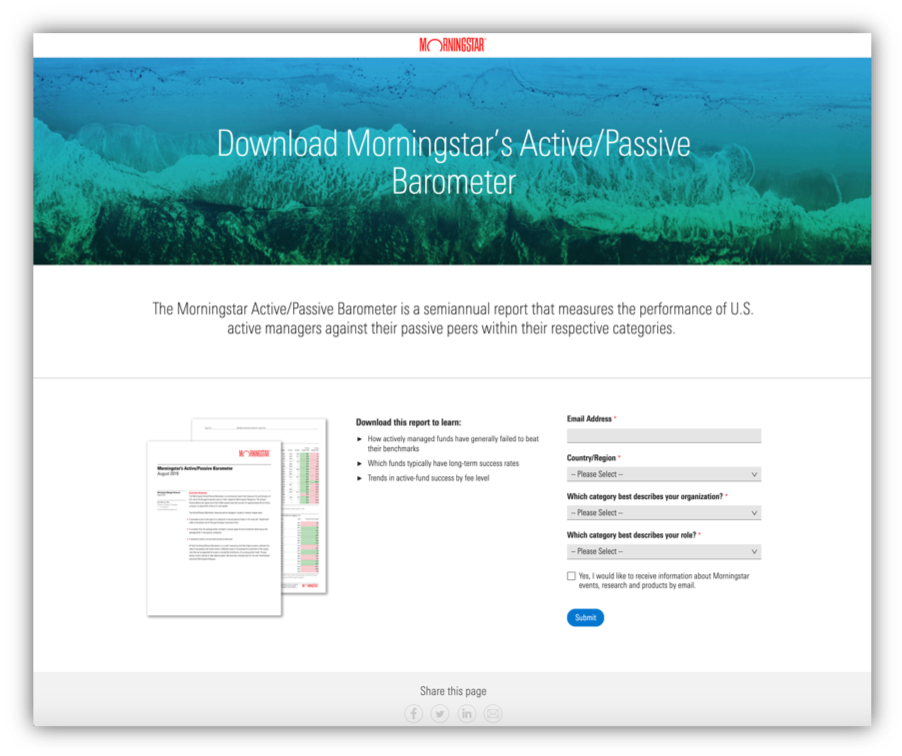
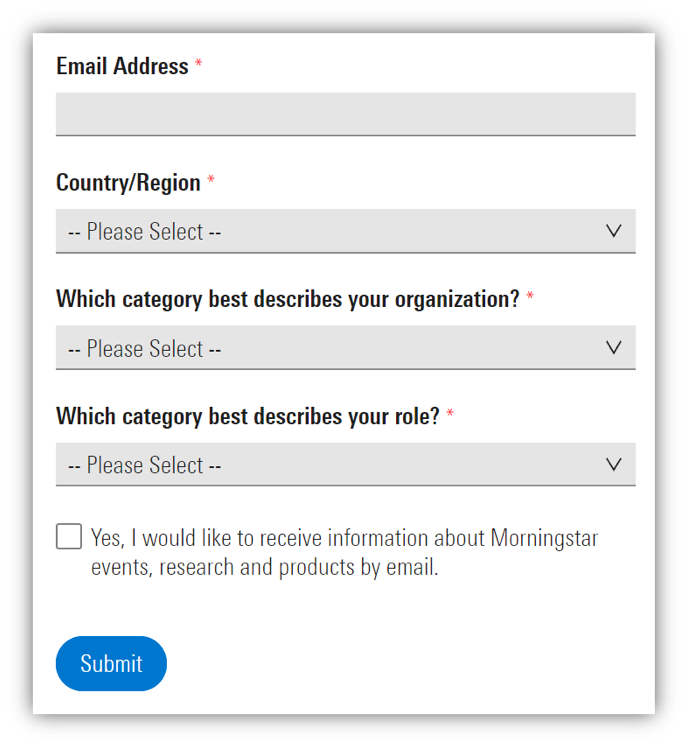
System 1 🧠 : “Yeah, this is something I can safely ignore”
BEHAVIORAL DESIGN GEMS COLLECTED












We redesigned the screen to slow people down – ADDING friction – to encourage a more intentional, deliberative process.

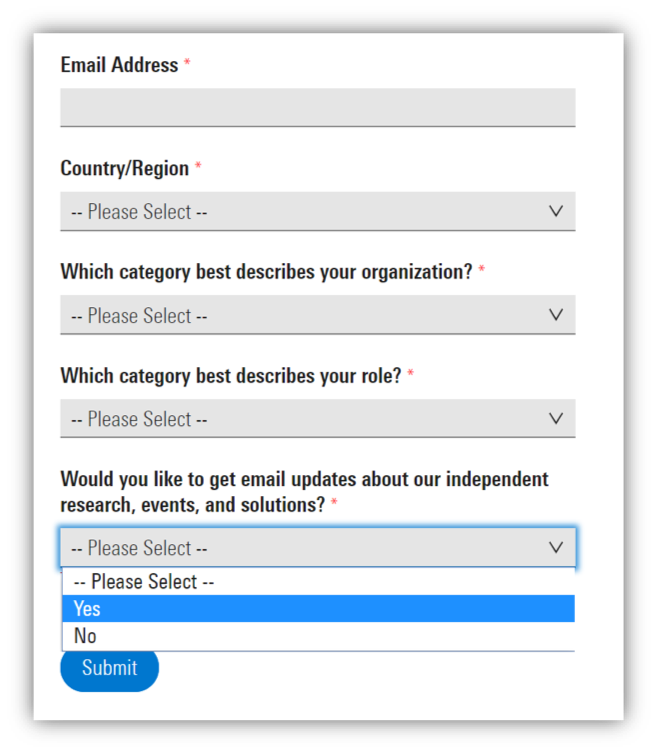
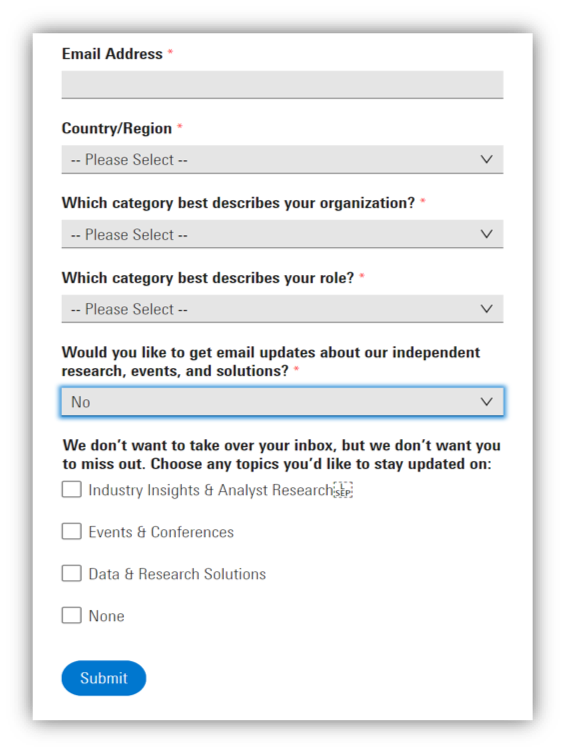
Allow them to select the materials that they value, giving them control
Change the form to encourage people to make a deliverable choice
BEHAVIORAL DESIGN GEMS COLLECTED












It turned out that people did want Morningstar’s research, once they thought about it. This simple test lead to a 500% increase in opt-ins.



Allow them to select the materials that they value, giving them control
Change the form to encourage people to make a deliverable choice
BEHAVIORAL DESIGN GEMS COLLECTED












Some of the other techniques that focus on the cost-benefit evaluation include Loss Aversion, Framing Effects, and simplifying to avoid Choice Paralysis and Cognitive Overload.

BEHAVIORAL DESIGN GEMS COLLECTED









🔎


Evaluation time... What choice will you make 🔴🔵?


EVALUATION of costs and benefits
TO START AN ACTION
TO STOP AN ACTION
-
Make sure the incentives are right -
Leverage existing motivations -
Test out different types of motivators -
Leverage loss aversion -
Use Commitment Contracts -
Pull future motivations into the present -
Use competition -
Avoid cognitive overhead -
Avoid choice overload
-
Increase the costs, decrease the benefits -
Unlink the action from existing motivations -
Test out different types of motivators to stop -
Leverage loss aversion (same!) -
Use Commitment Contracts (same!) -
Increase motivation -
Use competition to stop -
Add to cognitive overhead -
Add to choice overload




Next up is ability to act, whether it's resources, logistics, self-efficacy, or anything required for the behavior to be accomplished.

ABILITY

BEHAVIORAL TOOL
Ability refers to the resources, logistics and self-efficacy people have available to support them to take action.
YOUR PROGRESS
R
E
A
T
E
Do they think they’ll succeed? Can they act now? Do they have the resource?
C


BEHAVIORAL DESIGN GEMS COLLECTED














We human are procrastinators by nature and tend to stick to our status quo rather than making active choices that might better benefit ourselves in the long-run.

BEHAVIORAL DESIGN GEMS COLLECTED













The act of making these active choices can become a friction in itself. So what can we do to remove those frictions?

BEHAVIORAL DESIGN GEMS COLLECTED













One famous example is the Save More Tomorrow Plan, or the SMarT Plan, which is a pension program created by Thaler and Benartzi.

BEHAVIORAL DESIGN GEMS COLLECTED













The idea behind this intervention came from the fact that lack of retirement savings is a big problem in the US.

BEHAVIORAL DESIGN GEMS COLLECTED













While most people actually do want save more for their future, they still struggle to turn that intention into action.

BEHAVIORAL DESIGN GEMS COLLECTED













The SMarT Plan was designed to remove the frictions by automatically increasing the pension contributions of the enrolled employees when they get their pay raise by default.

BEHAVIORAL DESIGN GEMS COLLECTED










15,472,080 Americans are effortlessly setting aside money for retirement thanks to the Save More Tomorrow program.



And once enrolled in the program, the employees will remain in the program unless they opt-out.

BEHAVIORAL DESIGN GEMS COLLECTED













It turns out that joining the SMarT Plan lead people to continue to increase their savings rate, so that by the fourth pay raise, their savings rate averaged at 13.6%.


Saving rates of those who joined the SMarT
BEHAVIORAL DESIGN GEMS COLLECTED













Much higher than those who had just followed the financial consultants advice instead of joinng the program, with their their savings rate of 8.8.

Saving rates of those who only followed the financial consultants advice

Saving rates of those who joined the SMarT
BEHAVIORAL DESIGN GEMS COLLECTED













Setting defaults is a great way to help people do better by letting them do nothing!

BEHAVIORAL DESIGN GEMS COLLECTED










🔎


So you want even more strategies? Well, come get it 😎


ABILITY to act
TO START AN ACTION
TO STOP AN ACTION
-
Remove unnecessary decision points -
Default everything -
Elicit implementation intentions -
Deploy (positive) peer comparisons -
Help them know they’ll succeed -
Look for physical barriers
-
Add small pauses and frictions -
Require choices, remove defaults -
Elicit implementation intentions -
Deploy positive peer comparisons – examples of other succeeding at stopping (same!) -
Help them know they’ll succeed (same!) -
Add physical barriers (no keys to the car, etc.)




Now that your user have all the resources required to take action, the question becomes...

BEHAVIORAL DESIGN GEMS COLLECTED













Next we look at timing. Is timing right to act now or does the user feel there is a better time to act later?

BEHAVIORAL DESIGN GEMS COLLECTED














TIMING

BEHAVIORAL TOOL
YOUR PROGRESS
R
E
A
T
E
Is it urgent right now? Is it worth doing now? Is there a better time?
C
Timing refers to when the user sees as the right time to act and if they experience any urgency to take action.



Many people who plan to build a habit of daily exercise fail because other things seems more important in the moment (like the next episode of their favorite tv show).

BEHAVIORAL DESIGN GEMS COLLECTED














What can we do to bump up the priority for exercising?

BEHAVIORAL DESIGN GEMS COLLECTED














We can make it urgent. There's many ways to do this, but one good example is...

BEHAVIORAL DESIGN GEMS COLLECTED











🔎


You truly are the one, but I'm almost afraid you're becoming too powerful. Remember to use these insights for good! 🙌


TIMING and urgency to act
TO START AN ACTION
TO STOP AN ACTION
-
Frame text to avoid temporal myopia -
Remind of prior commitment to act -
Make commitments to friends
-
Frame text to avoid temporal myopia (same – for the benefits of stopping) -
Remind of prior commitment to act (same, for a commitment to stop)
-
Make commitments to friends (same, to stop)




Getting a dog! For many dog owners, when it's time for your dog's daily walk, you would have no choice but to drop your tv remote and get up as your furry friend bark at you excitedly.

BEHAVIORAL DESIGN GEMS COLLECTED














This commitment requires you to take action now. Otherwise you'd face the consequences of mistreating and disappointing your dog.

BEHAVIORAL DESIGN GEMS COLLECTED














Lastly, prior experiences of taking an action can either encourage or discourage your users from taking the action again.



EXPERIENCE

BEHAVIORAL TOOL
This refers to the users prior experiences of taking action. What has happened it the past when they did the desired behavior?
YOUR PROGRESS
R
E
A
T
E
Have your users had negative experiences in the past?
C
BEHAVIORAL DESIGN GEMS COLLECTED
















Remember Katy Milkman? The Wharton School professor also discovered that nudging people on “temporal landmarks” can help them become more effective in setting and achieving goal.

BEHAVIORAL DESIGN GEMS COLLECTED















These temporal landmarks could be anything from birthdays, to the start of a new week, or the beginning of a school semester.

BEHAVIORAL DESIGN GEMS COLLECTED















This Fresh Start Effect technique can help people break free from their past as they take a "fresh start" to embark on a new journey to change their behaviors.

BEHAVIORAL DESIGN GEMS COLLECTED















In other words, you may be able to frame an otherwise mundane day as a "fresh start" and increase motivation to act.

BEHAVIORAL DESIGN GEMS COLLECTED














Well done! You past the final test of this case study. You can learn even more about these techniques in Stephen's book.


Prior EXPERIENCE taking action
TO START AN ACTION
TO STOP AN ACTION
-
Use Fresh Starts -
Use Story Editing -
Use Slow-down techniques
-
Use Fresh Starts -
Use Story Editing -
Use Slow-down techniques




Alright! We have now covered the whole CREATE Funnel

C
UE 👀
R
EACTION 🙌
E
VALUATION 🧐
THE
A
BILITY 💪
CREATE
FUNNEL
T
IMING ⏰
E
XPERIENCE ⭐️
BEHAVIORAL DESIGN GEMS COLLECTED
















I cover the final steps of DECIDE in the book, including how to ensure you're implementing an ethical intervention and how to set up experiments.

DECIDE
A Blueprint for Applied Behavioral Science



Define the Problem
Craft the Intervention
Implement the Solution
Determine the Impact
Evaluate Next Steps
Explore the Context
BEHAVIORAL DESIGN GEMS COLLECTED















Remember that designing for behavior change is an iterative process of learning about our users and their needs, and refining the product if it misses the mark.

DECIDE
A Blueprint for Applied Behavioral Science
Define the Problem
Craft the Intervention
Implement the Solution
Determine the Impact
Evaluate Next Steps
Explore the Context



BEHAVIORAL DESIGN GEMS COLLECTED















The most overlooked, yet the most essential part of the process isn’t great ideas and nifty behavioral science tricks...

BEHAVIORAL DESIGN GEMS COLLECTED















It’s careful measurement of where our efforts go awry, and the wiliness and tools to learn from those mistakes. When you put these insights to practice, always remember to test and evaluate!

BEHAVIORAL DESIGN GEMS COLLECTED













The Workbook
This free workbook summarizes the core ideas from Designing for Behavior Change, and provides practical materials to use at each stage of the design and development process: to help your users start or stop a key behavior in your products or in their lives.
BEHAVIORAL RESOURCE







We have now completed the second part of the case study!
What I've shared in this case study is just examples of some of the core tools. You’ll find more in the free workbook, just click Download or visit behavioraltechnology.co
BEHAVIORAL DESIGN GEMS COLLECTED












Well done, you've completed this case study! Now it is time you begin testing these tools yourself and put them to practice. Good luck!




CASE STUDY COMPLETED










